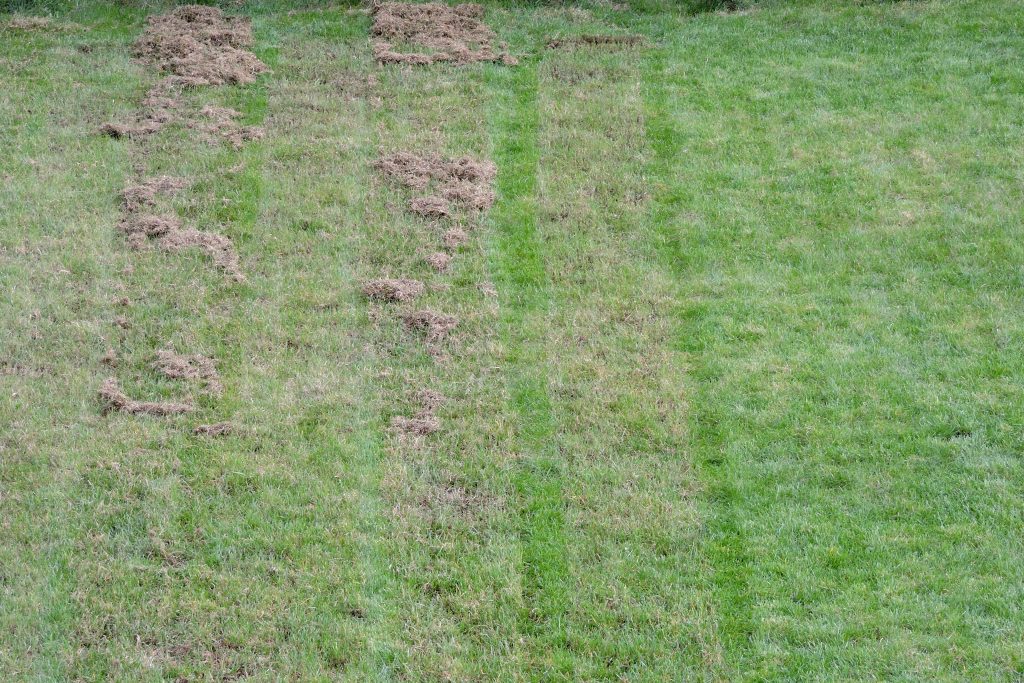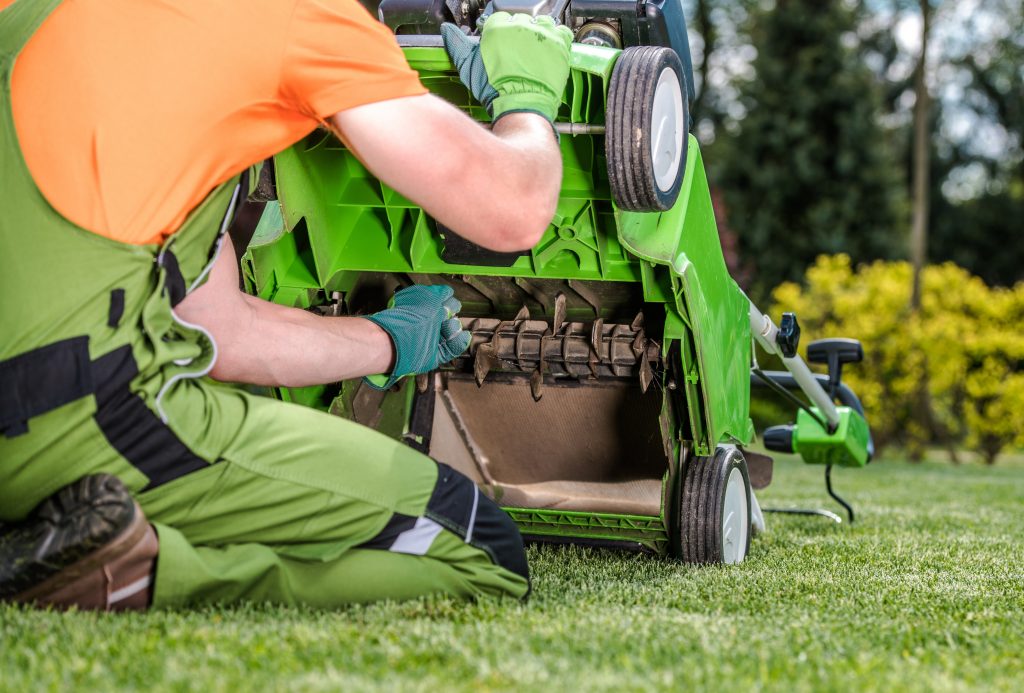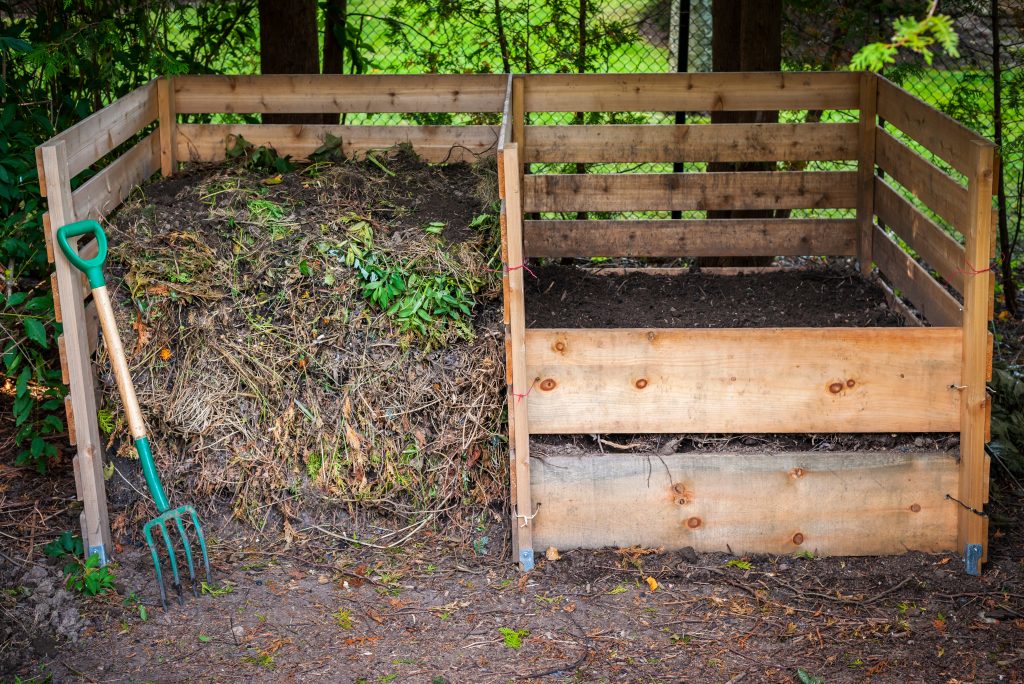If you’re a homeowner with a lawn, then you know the importance of maintaining a healthy and vibrant yard. One of the biggest challenges in lawn care is dealing with thatch – a layer of dead grass, roots, and other organic matter that accumulates on the surface of your lawn.
Too much thatch can suffocate your grass and prevent water and nutrients from reaching the roots, leading to a dull, unhealthy lawn. But don’t worry, in this article, we’ll show you how to remove thatch from your lawn and keep your grass looking lush and green all season long.
What is Lawn Thatch?

Mow Your Lawn
Mowing your lawn can help remove some of the thatch buildup, as the mower blades cut through the grass and thatch layer, breaking it up and making it easier to decompose. Additionally, mowing your lawn regularly can promote healthy grass growth and prevent excessive thatch buildup in the first place.
By cutting your grass to the appropriate height for your lawn variety, you can encourage new growth and discourage thatch accumulation. It’s important to note that you shouldn’t remove more than one-third of the grass blade in a single mowing, as this can stress the grass and make it more vulnerable to disease and other issues.
With the right techniques and tools, you can make the most of your lawn mowing efforts and keep your lawn looking its best all season long. Here are some of our top tips.
Mow when the grass is dry: Wet grass can be difficult to mow and can clog up your mower, so it’s best to wait until the grass is dry before you start mowing.
Don’t cut the grass too short: Cutting the grass too short can stress the plant and leave it vulnerable to disease and pests. Aim to cut no more than one-third of the grass blade at a time.
Mow in a different direction each time: Mowing in the same direction every time can cause the grass to bend and lean in one direction, giving your lawn an uneven appearance. To avoid this, mow in a different direction each time.
Keep the mower blade sharp: A dull mower blade can tear the grass, leaving it vulnerable to disease and pests. Be sure to sharpen your mower blade regularly.
Leave the grass clippings on the lawn: Grass clippings can provide valuable nutrients to the soil, so it’s a good idea to leave them on the lawn after mowing. Just be sure to mow often enough that the clippings don’t smother the grass.
If you want to ensure you have enough nutrients for your soil, consider buying some Westland Topsoil.
Thatch Rake or Dethatcher?
A thatch rake and a dethatcher are both tools used for removing thatch from a lawn, but they work in different ways and have different uses.
A thatch rake, also known as a lawn rake or a dethatching rake, is a hand tool with a series of curved metal blades that are designed to dig into the lawn and pull out the thatch. Thatch rakes are best used on small lawns or on areas where there is only a light build-up of thatch. They are also useful for removing moss and other debris from the lawn.
A dethatcher, also known as a power rake or a vertical mower, is a machine that uses metal blades or tines to dig into the lawn and pull out the thatch. Dethatchers are best used on larger lawns or on areas where there is a heavy build-up of thatch. They are also useful a a lawn aerator and for preparing it for overseeding.
When deciding which tool to use, consider the size of your lawn, the amount of thatch build-up, and your own physical ability. If you have a small lawn or a light build-up of thatch, a thatch rake will do the job. If you have a larger lawn or a heavy build-up of thatch, a dethatcher may be more effective.

Disposing of Thatch
When disposing of thatch, it’s important to note that it is a valuable source of organic matter that can be used to improve your lawn and garden.
If you have a compost bin, adding the thatch to it can help break down the material and create nutrient-rich compost that can be used as a natural fertiliser for your plants.
If you do not have a compost bin or do not wish to use the thatch for composting, there are other ways to dispose of it. Some cities offer green waste pickup, which allows you to dispose of yard waste like thatch along with your regular garbage. Check with your local waste management department to see if this service is available in your area.
Another option is to take the thatch to a green waste facility, where it can be processed into mulch or compost for use in landscaping or agriculture. Some gardening centers or nurseries may also accept thatch for composting or other uses.
No matter how you choose to dispose of your thatch, it’s important to avoid dumping it in natural areas or waterways, as it can disrupt the local ecosystem and harm wildlife.
By properly disposing of your thatch, you can help improve the health of your lawn and garden while also reducing your environmental impact.

Lawn Care After Dethatching
After removing thatch from your lawn, it’s important to take proper care to promote healthy growth and prevent thatch buildup in the future. Here are some tips:
Aerate: Aerating your lawn can help improve soil structure and allow air, water, and nutrients to reach the roots more easily. This can also help reduce thatch buildup in the future.
Fertilise: Fertilising your lawn can help promote healthy growth and fill in any bare or thin spots. Be sure to choose a fertiliser that is appropriate for your lawn’s needs and apply it according to the manufacturer’s instructions. We recommend Westland SafeLawn Liquid Lawn Feed for fast results or Westland Multi-Purpose Compost for a slower release.
Water: Water your lawn deeply and infrequently, rather than frequently and shallowly. This will help encourage deep root growth and prevent thatch buildup.
Mow regularly: Mowing regularly can help prevent thatch buildup by removing excess grass clippings and promoting healthy growth. Be sure to keep your mower blades sharp to avoid tearing the grass.
Monitor for pests and diseases: Keeping an eye out for pests and diseases can help you catch and address problems before they become too severe and cause damage to your lawn.
By following these tips and taking proper care of your lawn, you can help ensure that it remains healthy, vibrant, and free from thatch buildup.
Emily - Graphic Designer & Copywriter
Emily - skilled graphic designer, copywriter, and content creator. She has a talent for creating stunning visuals and crafting compelling messaging that resonates with her audience.
